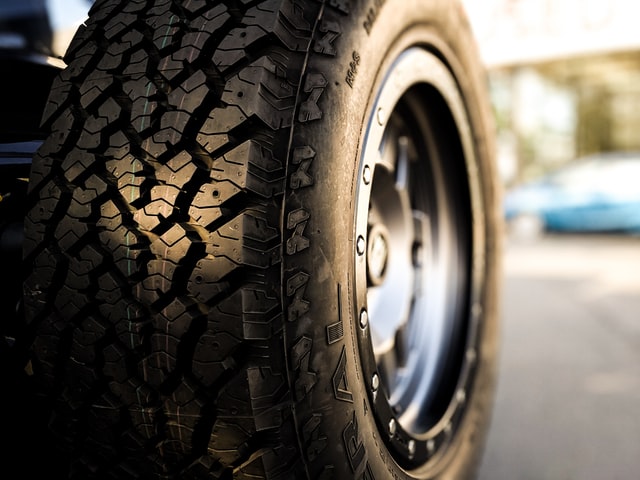We generally perceive tires to be made out of rubber, but the composition of a tire is much more complex than that. Besides the intricacies of modern technology implemented in designing a tire’s rubber compound, over five different materials go into producing a tire — and yes, tires have steel! However, natural rubber is present in the highest percentage in most tires.
Which Parts of a Tire Have Steel?
Steel wires are typically used in a tire’s bead bundles and belts. In the case of truck tires, steel is also used in the body ply of some tires.
Steel belts stiffen up the tire’s frame and enhance its handling, traction, and wear resistance. Steel anchors in the bead bundles keep the tire locked onto the wheel with a secure fit.
Tires have steel in them since rubber compounds need support from sturdier materials to achieve desirable levels of safety and durability in a wide variety of demanding conditions such as scorching heat, freezing temperatures, off-road terrain, etc.
Parts of a Tire
Let’s have a look at the core components of a tire and the various types of materials they consist of.
A tire consists of a bead, a bead filler, stability belts, body ply, inner liner, sidewall, and tread. Following are brief descriptions of what they are and what they’re for:
Tread
A tire’s tread is arguably its most crucial component. It’s what matters most for a tire’s road grip, treadwear, traction, abrasion resistance, and overall performance. The tread rubber is carved into a unique tread pattern designed for optimized performance in different conditions, weather, and circumstances — depending on the type of tire it is.
For instance, a tire designed for optimized wet performance will typically have four wide circumferential grooves to evacuate water and improve traction in the rain. Similarly, tires designed for snowy roads usually have aggressive biting edges built into the tread pattern for reliable winter performance. The tread rubber compound will also be softer in dedicated winter tires for optimized performance in cold conditions.
Belts
Tires generally have a pair of belts comprising steel belts installed at opposite angles. Their purpose is to provide additional stability to the tire’s tread area, contributing to durability, road grip, and improved handling.
Bead Bundles and Bead Fillers
Bead bundles are made of wire strands that help the tire securely fit onto the wheel. Bead fillers (made of rubber compound) are positioned above these bundles. They wrap around the bead and tune the tire’s handling and ride behavior.
Body Ply
Body plies are made up of rayon, nylon cords, polyester, and a rubber layer. A tire typically has one or two of these as they form the tire’s structure and strengthen it to handle the pressure of inflation.
Sidewall
A tire’s sidewall consists of a rubber compound and covers its body plies on its sides, providing resistance against scuff marks, abrasion, chip damage, and treadwear.
Inner liner
Like the body ply, the inner liner is also a rubber compound that helps against inflation pressure on the tire’s inside.
